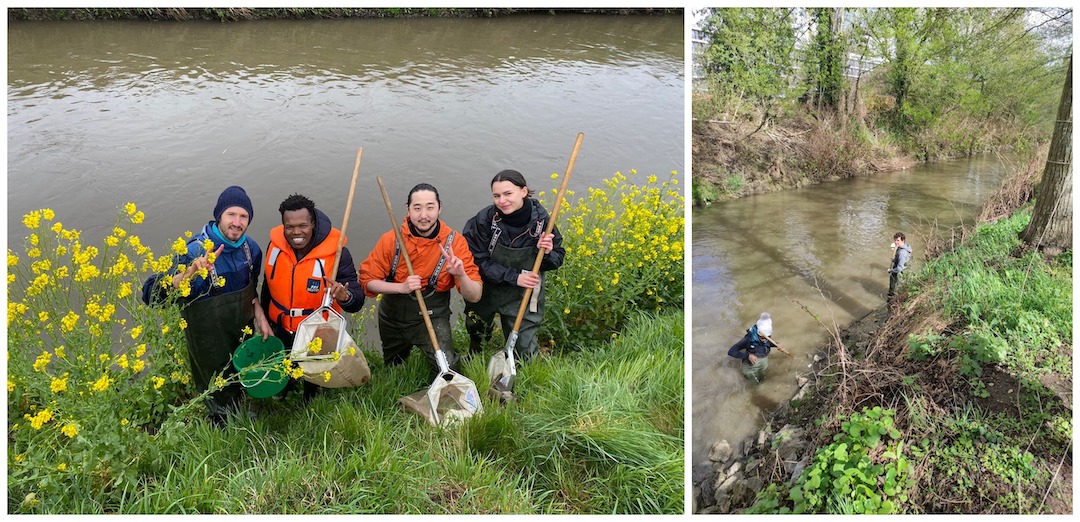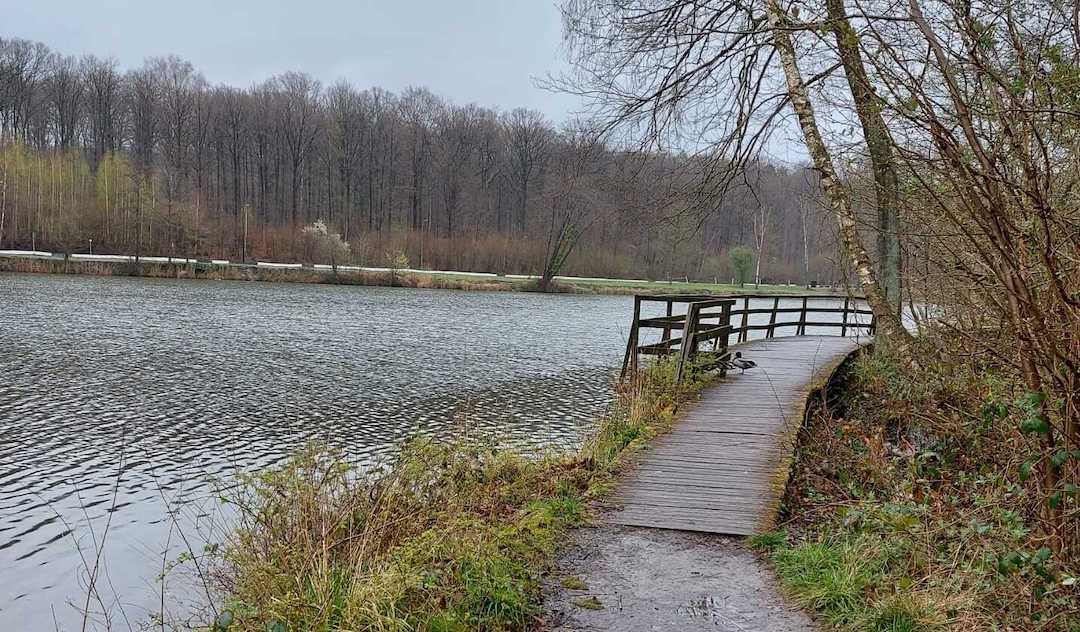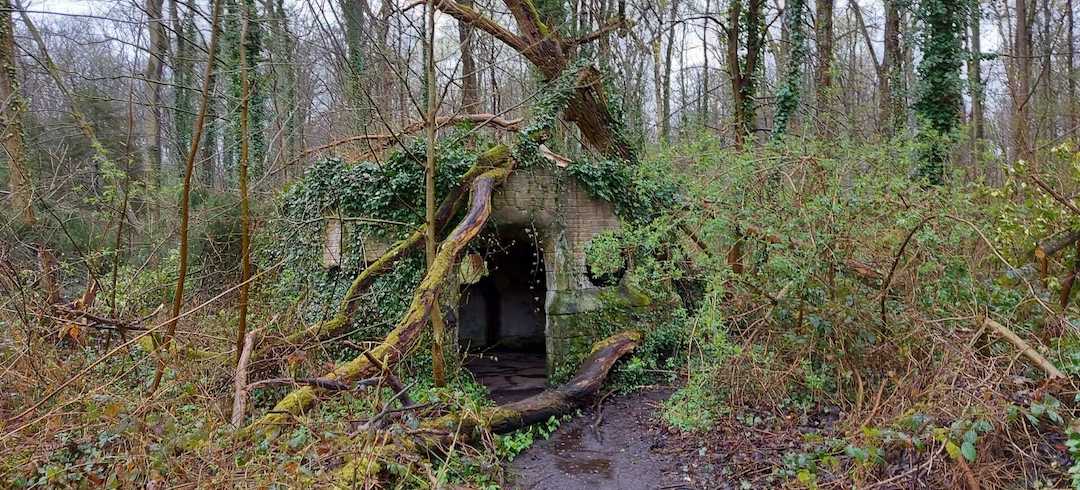By Nathan Johan L Castagne, Gang-Min Rim, Zoë Jacquet, Anasuya, Dimo Pambudi
For today’s blogpost we, as a group of students in sustainable development, will be talking about our experience in the area of Heverleebos in relation to cultural ecosystem services. For this, we went to Zoete Water, which is a collection of ponds in the direct surroundings of Leuven, and is located at the entrance of the Heverlee forest . We were looking for potential respondents to fill in our paper survey, which aimed at giving a first impression of the most salient cultural ecosystems services in the area. When one thinks about nature, the first idea that comes to mind might not be the highly urbanized Flemish suburbs. Of course, would they say, there’s forests and open fields, ponds and rivers, but what type of service could these possibly provide to the nearby inhabitants? This is something that we heard from our family and friends when we explained that, because of the sanitary situation, our inquiry on cultural ecosystem services would take place in Flanders rather than in Ndumo: imagining nature as a source of benefits for local people in the Ndumo national park is more evident. But here? What could those little patches of forest, wedged between two highroads represent?
Well, the question is far from being innocuous. What nature could represent and furnish to people is naturally different here than what it means to people in Ndumo, but it does not mean it represents nothing. We were not certain of what we would find out, but we had the intuition that the results would be a mix of leisure activities, aesthetic qualities, as well as some spiritual value, given that there is a chapel in the area.
Indeed, the commonly observed cultural ecosystem services in the area were the physical use of the environmental settings. The forest and rivers create the best setting for visitors and residents to exercise and relax. Some people enjoy the thrill of canoeing along the Dijle river, cycle up steep hills of the Heverleebos or even peacefully pedal through dirt terrain inside the forest feeling the fresh air and hearing sounds of birds chirping. It is also the perfect place to take a walk into the forest with your friends and families, to escape from the busy urbanized life from time being. From young to old, people enjoy the recreational activities in the environment, which often provide a way for well-being, healthy mental and physical life.
Something that was quite remarkable is the type of spirituality that the forest represents. Spiritual in a way that people would use the forest as a way to reconnect to themselves and to nature. It represents an exit from the very urbanized Flanders that is coupled with lots of noise and crowded spaces. Once in the forest, you are no longer part of that busy buzzling world but you get some time to breathe, reflect and rest. The spiritual symbol that is connected to the forest could also be seen as a representation of the fact that mankind yearns for more nature and calmness, something that has been neglected over the last couple of years with the fast development of built areas. So, although Flanders may not possess lots of nature and wildlife, the forest like the one in Heverlee has a very important spiritual meaning to escape the urban.
Moreover, the forest can have significant meanings for an individual or for the community, either historically, or culturally as heritage. Anton, who is KU Leuven professor and also one of the residents of the neighborhood, and frequent visitors of the forest, highlights some specific meanings to the forest. “It is the biggest forest in Flanders that gives the identity to this place also… It is something within historical meaning… It has already for a long time been a protected area, even since the middle ages and onwards…” In addition, there are castles, remnants of Roman villas, and churches which all are considered as heritage that exist within the area. The historical value of the heritage makes a perfect place for people to acknowledge the historical value and cultural significance.
In relation to the search for more nature, the aesthetic quality of the forest is something people value a lot. The greenery, the flowers, the funghi, the insects, the trees, the birds, and sometimes even the wildlife (foxes, wild boars, etc.) are all of aesthetic importance to the forest visitors. Additionally, the colors that change with the seasons is something people find extremely beautiful. Most of the visitors attach an aesthetic value to the forest because there is so much life and beauty, something they are also very proud of to have in Flanders. Again, this could serve as a representation of the importance that people give to nature, a value that was mostly forgotten, but is now becoming more and more important as nature has become scarce in Flanders.
Due to the fact that we had to do research on the water quality and the aquatic biodiversity in the rivers in the area of Heverlee, we were able to demonstrate and identify ourselves that the forest has great educational and scientific values. The forest can serve us a lot in terms of education. We are able to detect the quantity and the biodiversity of plant and animal species, but also the quality of the soil and water could be identified. Put bluntly, this research can serve as a representation of the biodiversity of Vlaams-Brabant in general, as the forest is one of the biggest in area and one of the few places where a big area of nature still exists. As described by some visitors, the forest can be used as a school, one without any benches. It can teach children (but also adults) about the different plant and animal species while seeing them with their own eyes. It is also a great way to teach children about the importance of nature in relation to climate change, as you can literally show examples of the problems of climate change in the forest.
That’s all there to it! We hope that our blogpost has helped you understand diverse cultural ecosystem services that surrounds our environment. Take a moment, and try to enjoy the cultural ecosystem services that exists in your place! Feel free to contact us if you have any questions regarding our blogpost.
< Back to Living Lab Leuven April 2022


